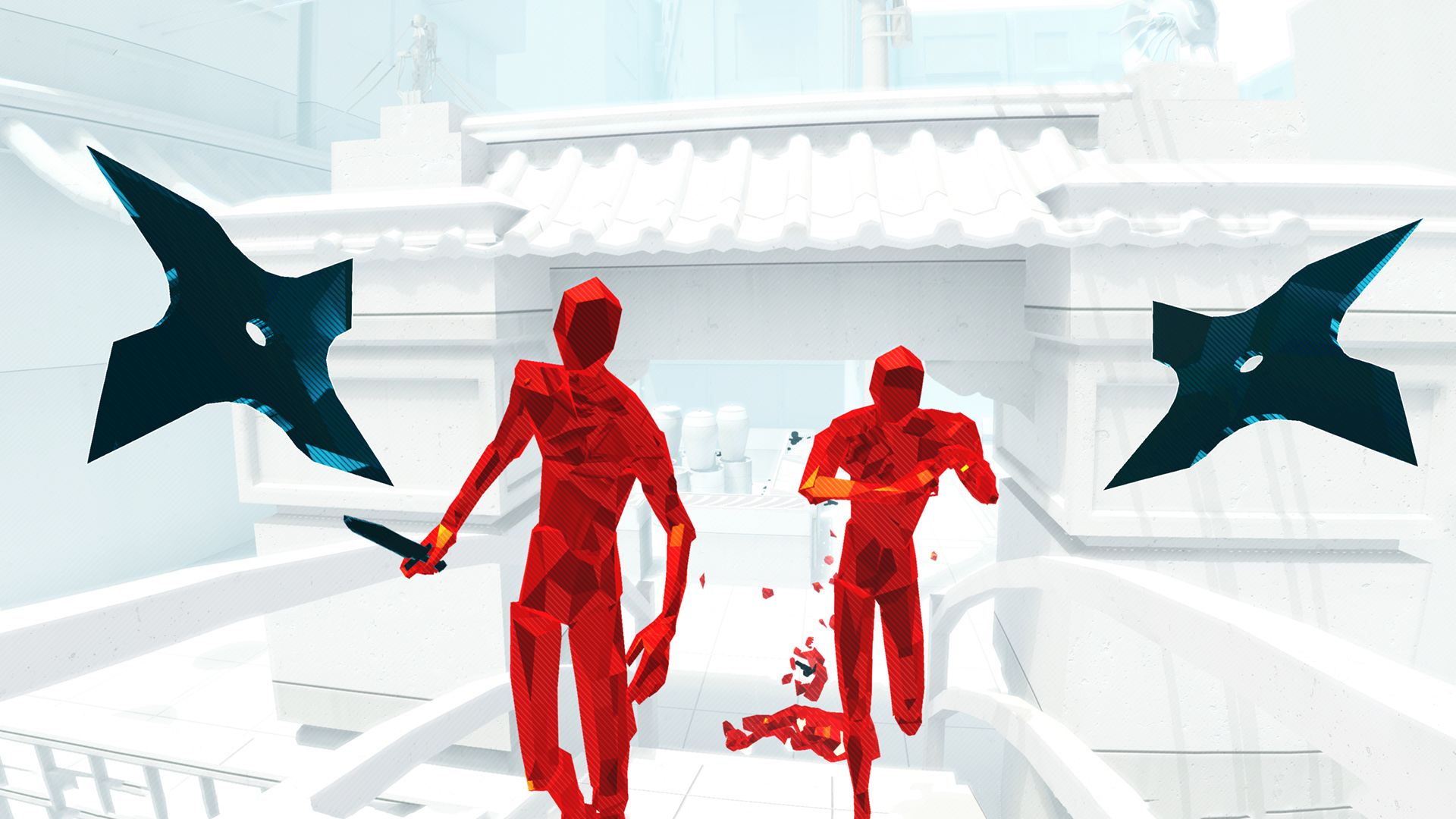

That might sound sound annoying but it’s actually blast to try out different things each time. Fail on the last one of these and you will have to do all of the prior rounds once more. The Dell Visor is attractive, well-balanced, and comfortable, coming in slightly below the current Oculus Rift price and providing 90 percent of the same experience.After doing about five or six of these rounds in a row, you get a checkpoint of sorts and then do a few more rounds. I think Dell’s done a swell job of adapting Microsoft’s reference design. But controllers are such an integral part of the VR experience that you won’t want to skip them.
#Superhot htc vive windows
To be fair, you’ll be able to buy Acer’s Windows Mixed Reality by itself- sans controllers-for $300. Wasn’t the whole point of these headsets to bring VR to the masses? Because that’s not happening at these prices.
#Superhot htc vive plus
The price of the Dell Visor with controllers is $449, which is surprisingly close to the Oculus Rift’s current $500 price tag-and at that point, why not just buy a Rift? You’d get a stable platform with an existing library of software, plus built-in headphones, more accurate position tracking, and more ergonomic controllers.ĭell’s Visor isn’t even the most expensive model. When Steam VR support is added, this whole raft of Microsoft headsets might look more appealing.
#Superhot htc vive windows 10
My last complaint, and it has nothing to do with the hardware: The Windows 10 store. Still, it was indicative of how far markerless inside-out tracking has to go before Microsoft can really say it’s “perfected.” “Open” In a quiet home environment, surrounded only by static furniture and the odd pet? Perhaps it works a lot better. Now, the PAX show floor is hardly ideal conditions to demo inside-out tracking, and the more charitable side of me is willing to give some benefit of the doubt. The headset just had no idea where I was, and had somehow concluded we’d moved that far above our initial point on the PAX show floor. Within 10 minutes of calibrating the Dell Visor, I’d started to creep slowly but surely into the air, until eventually my character was floating eight feet above the floor. I’ve had my Vive set up for over a year with no major issues. But it’s a total wash for gaming purposes. This isn’t a huge deal for many of the Windows Mixed Reality applications Microsoft is touting-day-to-day productivity, education, et cetera. When you put on the Visor it asks you to look left, right, down, and up, then uses this information to track the world around you. That’s what does the tracking, and there are similar cameras on every Windows MR device. You’ll notice there are two cameras on the front of the Dell Visor. Instead, Microsoft claimed to have perfected markerless inside-out tracking. Base stations are vulnerable to occlusion (when all stations lose sight of an object at the same time) but it’s otherwise extremely reliable.

Regardless of method, the results are the same: fast and highly accurate tracking. With HTC, Vive’s tracking is done by the headset and controllers themselves-the wall-mounted base stations are just dumb boxes that blast lasers into the room. With Oculus, these are cameras that plug straight into your computer and analyze the position of the Rift and the accompanying Touch controllers. It gets hot, but air channels near the nose and in the center of the forehead help keep you slightly cooler than the competition does.īoth the Rift and Vive utilize external base stations of some sort for tracking. I was ducking, kneeling, squatting, leaning, and so on to evade enemy bullets, but the lenses never fogged up, nor was my face covered in sweat afterward. Dell’s PAX demo had me playing through Superhot VR, which is a fairly active game. The Visor’s ventilation is better than it is for both the Vive and Rift.

No need to take the whole headset off or awkwardly try to peep out the bottom edge. If you want to take a drink, check your phone, use your mouse, or whatever, you simply lift the screen part of the Visor up out of the way.

It’s a great feature, regardless of origin. The front also flips up out of the way like a welding helmet-again, similar to PlayStation VR. The Visor is beautifully balanced, resting effortlessly on your head and gently cinching in place. Dell also lifted some of the best ideas from Sony’s PlayStation VR headset or Microsoft’s own HoloLens, eschewing the bulky straps seen on the Rift and Vive in favor of a welding helmet-style ring. Clad all in white, it definitely looks more “finished” than the Vive, though I still think the Rift’s design has a slight edge.


 0 kommentar(er)
0 kommentar(er)
